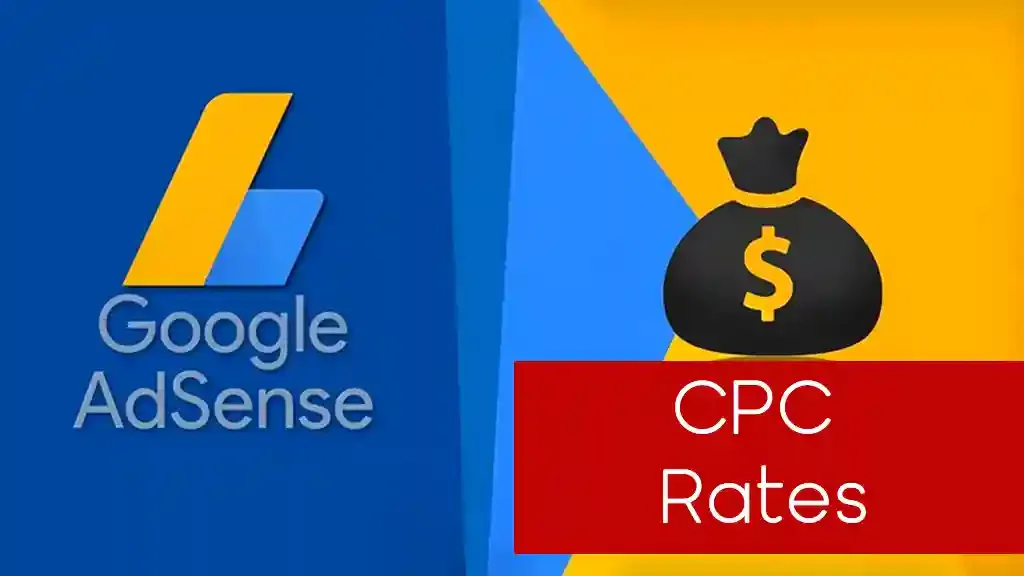Google Adsense CPC and RPM Rates Explained
Are you curious to learn about Adsense terms like Revenue-per-mile ( RPM), cost-per-click (CPC) for Google Adsense ? Stop searching about this now!
Today, we are looking at complete Google Adsense metrics guide. Oh, I am Shriram Lamichhane, a digital marketing enthusiast with 2 years of research experience being Adsense Publisher.
Say goodbye to the frustration of navigating confusing advertising terms and hello to boosting your online advertising earnings. Get ready to unlock the secrets of the lucrative world of Google Adsense.
Two key metrics you'll want to know inside out as an AdSense user are CPC (cost per click) and RPM (revenue per thousand impressions).
Let's start with CPC.
What is CPC?
CPC stands for “Cost per Click”, which is a pricing model in online advertising where advertisers pay each time a user clicks on their ad. The cost per click depends on factors such as keywords, competition, and ad quality.
This is the amount advertisers pay every single time someone clicks one of their ads. It's determined by how competitive keywords are and the quality of the ad design. CPC fluctuates based on niche, audience and location.
As a publisher, you earn cash from advertisers paying those CPCs. The more clicks your ads get, the more dough you make. Generally speaking, higher CPCs mean fatter payments per click in your pocket.
What is RPM?
RPM stands for Revenue Per Millie and it is a useful metric for publishers. It helps you figure out how much money you can make from advertising through Google AdSense based on your page views.
Ok, so RPM measures how much money you earn for every 1000 ads shown on your site.
When an ad displays, that's called an impression. RPM shows your estimated earnings divided by the number of impressions, and then multiplied by 1000.
To find your page’s RPM, simply divide your estimated earnings by the number of page views and then multiply by 1000. This gives you a clear picture of how much money your website could earn from ads.
RPM measures how much you earn from every thousand ad impressions on your site. Impressions just mean your ads were visible - not necessarily clicked.
RPM factors in both CPC (cost per click, what advertisers pay each time an ad is clicked) as well as CTR (click-through rate, the percentage of people clicking the ads).
It's a handy way to guess how well your overall content is performing money-wise.
By looking at RPM, you can see an estimate of the revenue generated for every 1000 impressions. This gives you an idea of how much each 1000 views will make you in ad revenue.
Keep monitoring your CPC and RPM stats over time. Analyze which ads, keywords and placements are scoring you top revenue. Then optimize to squeeze more money from every view and click long-term.
Higher RPM means your ads are efficiently driving clicks and cash. It's a good indicator of your monetization abilities.
Factors affecting RPM and CPC Rates in Adsense
- Content quality/relevance - Well-made, interesting, authoratitve and high value content that matches what viewers search for tends to up performance.
- Location/age-group - Rates fluctuate based on where your audience is located and their characteristics like age. Financially stable places/age-groups pay out more.
- Advertiser demand - More competition means advertisers will pay higher CPCs to get their ads in front of hot audiences.
- Seasonality - Topics may earn more at certain times of year. For example, christmas shops boost clicks and cash in time of december month of year.
- Niche targeting - Choosing booming adsense categories and geographic areas with proven higher average CPC/RPM numbers helps adsense publishers to increase their earnings.
Do I need a website to get paid from Adsense?
You can either have a website with Google Adsense ads, or just a YouTube channel. If you go with just the YouTube channel, you will need to set up your AdSense account directly through YouTube.
Do we have to pay to sign up with AdSense?
Adsense is like a middleman between the advertisers and publishers. It is the one who pays you, as you are like a publisher. Your job as a content creator is to make content for your YouTube channel or website, or both. Once you meet Adsense’s requirements, they will pay you for the ads displayed on your content.
What are the criteria for making an Adsense account?
To set up an Adsense account, you must be 18 years or older. If you are under 18, your guardian or parents can assist you. Additionally, not all countries are eligible to join Google AdSense. You should check Adsense Eligibility Requirements before applying for it.
Final Words
In short, CPC stands for cost-per-click - it's what advertisers pay every time someone clicks on their ad. RPM is revenue per thousand impressions for publishers. Impressions are when an ad is displayed, whether someone clicks or not.
Both of these numbers are super important to keep an eye on. CPC tells you how much cost ads are costing to advertiser every time someone clicks. RPM shows how much you as a publisher are making off all those ad views.
It's handy to watch these metrics over time. That way you can see how your ad campaigns are doing and make any tweaks needed. Maximizing RPM is also key if you're a publisher, since that's where the money comes in! Keeping track of CPC and RPM in Google AdSense can help you optimize performance and profits.
